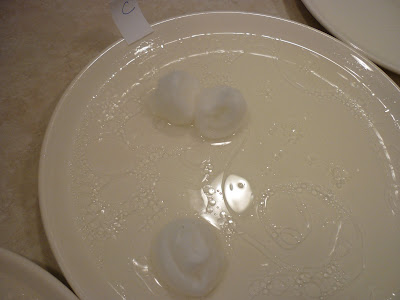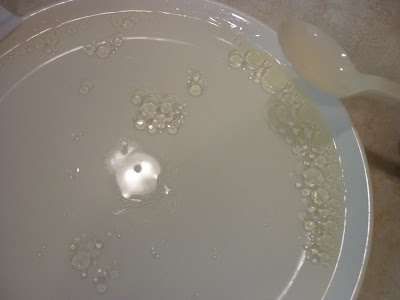I did an experiment to identify the methods that could be used to reduce the effects of an oil spill on waterfowl. I used the procedure in the back of the Environmental Science Merit Badge booklet.
I labeled four shallow plates (A, B, C, D) and filled them each with one cup of water.
I added one tablespoon of oil to each plate and stirred the oil into the water.
Then I followed the directions to test different ways to clean up an oil spill.
Plates filled with water.

Puting oil in the water.

Same.

Stiring the oil.

Trying to blow the oil to one side of the plate.

Stiring B.

Draging string across to see if it would contane it.

Stiring C.

Seeing if paper will soke up the oil.

Cotton balls do not work.

Newspaper no work eather.

Trying fabric scraps.

Fabric scraps do not work well.

This oil was left on the water's surface after I used the fabric scraps.

Dish sope.

Works. Spreds theoil across and makes ti lighter.

The detergent made the oil move to the edge of the plate.

Observations:
1. When I used a straw to blow the oil away, the oil and water kept moving into the same place; it was like a whirlpool motion.
2. When I pulled the string across the surface of plate B, it worked better than blowing air through the straw, but it was not very effective.
3. Of all the materials I used to soak up oil in pan C (paper towel, cotton balls, newspaper strips, fabric scraps), the cotton balls worked best but they also soaked up a lot of the water.
4. When I added liquid dishwashing detergent to pan D, it worked best. The oil moved to the edge of the plate and the globules were smaller and not as thick and heavy. Detergent works because of a chemical reaction with the water that reduces the water's surface tension.

No comments:
Post a Comment